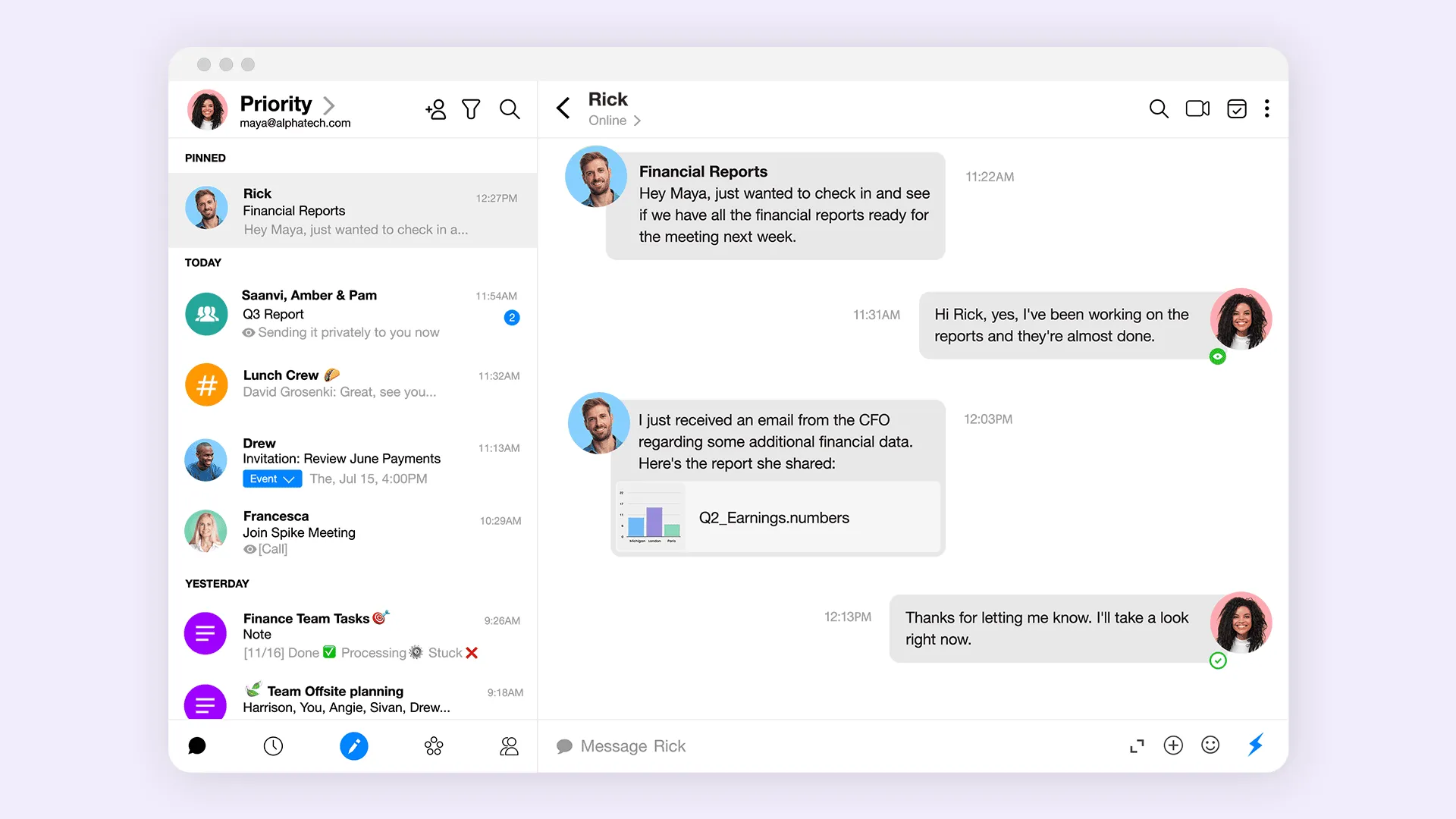Proximity Bias: How your communication system sabotages inclusion efforts

You’ve spent hundreds of thousands on unconscious bias training, your managers attend workshops about inclusive leadership, HR sends reminder emails about considering remote workers for opportunities, yet the same pattern persists:
Physically present employees accumulate advantages, remote workers get systematically marginalized, and your inclusion metrics remain stubbornly unchanged.
Here’s why: you’re applying behavioral solutions to an architectural problem.
Proximity bias isn’t bias at all. It’s the predictable outcome of communication systems that makes some employees structurally more accessible, contextually integrated, and operationally valuable than others.
No amount of awareness training can overcome a system designed to advantage physical presence.
How proximity bias actually works
Maria works remotely as your software architect. Tom works two floors up from where decisions happen. Both have equivalent technical skills, but Tom systematically receives more interesting assignments, greater project visibility, and faster career advancement.
This happens because Tom operates within communication infrastructure that automatically feeds him operational advantages. Managers don’t prefer him. The system does.
Tom overhears the client concern mentioned during lunch. By afternoon, he’s contributed solutions to a problem Maria doesn’t know exists. When priorities shift during an elevator conversation, Tom absorbs new strategic direction while Maria learns about it secondhand during next week’s team meeting.
Tom notices when someone looks overwhelmed and offers assistance at exactly the right moment. He sees who’s available for questions and when they’re deep in focused work. This environmental awareness makes his interactions more valuable and his availability more appreciated.
Tom’s casual input during hallway brainstorming sessions shapes project direction. His availability during informal problem-solving makes him indispensable to workflow. Over time, he becomes genuinely more useful. Skill has nothing to do with it. Infrastructure integration is everything.
The result is systematic inequality that feels completely natural to everyone involved. Tom isn’t gaming anything. The system games itself in his favor.
Why behavioral solutions can’t fix structural problems
Most executives assume proximity bias stems from unconscious prejudice that awareness training can correct. This is a fundamental category error.
Even managers committed to inclusion struggle because they’re fighting infrastructure rather than addressing root causes. They must artificially remember to include remote workers in conversations that happen naturally for office employees.
They need to actively seek input from people who lack the accumulated context that makes contributions valuable. They’re forced to create opportunities that emerge spontaneously for physically present team members.
Think about your product manager selecting who leads the new feature development. The in-person engineer has been contributing to informal technical discussions, offering insights during casual hallway encounters, building project understanding through environmental observation.
They know which approaches have been tried, which constraints matter, which stakeholders have concerns. The remote engineer possesses equal technical competence but lacks this accumulated operational context.
The choice feels obvious rather than biased because communication infrastructure has made one option genuinely more informed and valuable.
Bias training fails systematically because it treats symptoms while ignoring causes. You can’t solve unequal outcomes without addressing unequal communication access. Period.
How to design communication systems that eliminate proximity bias
Organizations that solve proximity bias don’t waste time changing behavior. They change architecture.
Communication infrastructure designed for location equality eliminates proximity advantages entirely. Context access, participation opportunities, and collaborative integration become independent of physical presence.
Instead of allowing critical information to disappear into physical conversations, unified information flow preserves all project context in accessible threads. Strategic discussions, decision evolution, and background context remain visible to distributed participants rather than requiring presence during informal exchanges.
Equal presence indicators provide ambient awareness about colleague availability, focus status, and appropriate interaction timing regardless of location. Remote team members gain environmental awareness that physical proximity provides automatically.
Context continuity ensures distributed employees maintain operational integration without requiring constant catch-up meetings or context reconstruction. They follow project development through natural communication evolution rather than artificial inclusion processes.
When infrastructure makes location irrelevant to collaboration effectiveness, team contributions get evaluated based on actual value rather than communication accessibility advantages.
How to measure proximity bias in your organization
You can measure proximity bias through communication patterns rather than subjective diversity assessments.
- Are remote employees participating in strategic discussions at rates proportional to their presence on teams?
- Do advancement opportunities flow equally to distributed versus office-based employees?
- How much additional effort do remote workers require to achieve equivalent project understanding?
- Do questions and collaboration requests receive equal attention regardless of requester location?
These metrics expose whether communication systems create equal collaboration conditions or systematically privilege certain locations.
Why this matters for all organizational inequality
The proximity bias problem reveals a broader organizational truth: most communication infrastructure accidentally creates systematic advantages for certain groups while disadvantaging others. Physical presence is just one dimension where this plays out.
When communication architecture creates equal access to context, influence, and collaboration opportunities, organizations stop fighting against their own systems. Inclusion becomes an emergent property of design rather than a constant behavioral struggle against structural inequality.
The goal isn’t eliminating the benefits of physical presence. Build digital infrastructure that provides equivalent operational advantages to all team members regardless of location.
When communication tools create equal presence and context access, merit-based advancement becomes possible because the system stops accidentally advantaging proximity over performance.
How Spike eliminates proximity bias through unified communication

Spike addresses proximity bias at its source by creating communication infrastructure that makes location irrelevant to collaboration effectiveness.
Instead of fragmenting team communication across email, chat, and meetings, Spike unifies all project conversations into persistent threads that preserve context over time. Remote employees access the same background information, decision history, and strategic discussions as office workers.
No more catching up on what happened during hallway conversations.
Real-time presence indicators help distributed teams coordinate naturally. You know when colleagues are available, focused, or in meetings regardless of whether you can see them physically. The environmental awareness that office workers take for granted becomes available to everyone.
Cross-platform integration means teams maintain external communication compatibility while creating internal communication equality. You’re not forcing adoption of yet another tool that creates workflow friction.
Organizations using Spike report measurable improvements in proximity bias incidents, as well as increased remote employee advancement rates, and significant decreases in the time required for distributed workers to achieve project context.
When communication tools create equal presence and context access, merit-based evaluation becomes possible because the system stops accidentally privileging proximity over performance. Your talent gets evaluated on actual contribution rather than communication convenience.




